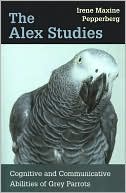Category Books
- Fiction Books & Literature
- Graphic Novels
- Horror
- Mystery & Crime
- Poetry
- Romance Books
- Science Fiction & Fantasy
- Thrillers
- Westerns
- Ages 0-2
- Ages 3-5
- Ages 6-8
- Ages 9-12
- Teens
- Children's Books
- African Americans
- Antiques & Collectibles
- Art, Architecture & Photography
- Bibles & Bible Studies
- Biography
- Business Books
- Christianity
- Computer Books & Technology Books
- Cookbooks, Food & Wine
- Crafts & Hobbies Books
- Education & Teaching
- Engineering
- Entertainment
- Foreign Languages
- Game Books
- Gay & Lesbian
- Health Books, Diet & Fitness Books
- History
- Home & Garden
- Humor Books
- Judaism & Judaica
- Law
- Medical Books
- New Age & Spirituality
- Nonfiction
- Parenting & Family
- Pets
- Philosophy
- Political Books & Current Events Books
- Psychology & Psychotherapy
- Reference
- Religion Books
- Science & Nature
- Self Improvement
- Sex & Relationships
- Social Sciences
- Sports & Adventure
- Study Guides & Test Prep
- Travel
- True Crime
- Weddings
- Women's Studies
The Alex Studies: Cognitive and Communicative Abilities of Grey Parrots » (First Edition)

Authors: Irene Maxine Pepperberg
ISBN-13: 9780674008069, ISBN-10: 0674008065
Format: Paperback
Publisher: Harvard University Press
Date Published: April 2002
Edition: First Edition
Author Biography: Irene Maxine Pepperberg
Irene Maxine Pepperberg is Associate Professor of Ecology and Evolutionary Biology, Associate Professor of Psychology, and Affiliate in the Program in Neuroscience at the University of Arizona. She is the winner of the 2000 Selby Fellowship from the Australian Academy of Sciences and was made a Fellow of the American Psychological Society.
Book Synopsis
Can a parrot understand complex concepts and mean what it says? Since the early 1900s, most studies on animal-human communication have focused on great apes and a few cetacean species. Birds were rarely used in similar studies on the grounds that they were merely talented mimics—that they were, after all, "birdbrains." Experiments performed primarily on pigeons in Skinner boxes demonstrated capacities inferior to those of mammals; these results were thought to reflect the capacities of all birds, despite evidence suggesting that species such as jays, crows, and parrots might be capable of more impressive cognitive feats.
Twenty years ago Irene Pepperberg set out to discover whether the results of the pigeon studies necessarily meant that other birds—particularly the large-brained, highly social parrots—were incapable of mastering complex cognitive concepts and the rudiments of referential speech. Her investigation and the bird at its center—a male Grey parrot named Alex—have since become almost as well known as their primate equivalents and no less a subject of fierce debate in the field of animal cognition. This book represents the long-awaited synthesis of the studies constituting one of the landmark experiments in modern comparative psychology.
Edward Kako
Pepperberg's work is admirably rigorous. Earlier work with language-trained animals was notorious for poor design and overly charitable interpretations of data. Pepperberg, by contrast, takes careful precautions against inadvertent cueing. She uses conservative estimates of chance when assessing the statistical reliability of Alex's responses, and she shows restraint when interpreting her results...Pepperberg has organized her book in a quasi-historical fashion, framing each phase of her research in terms of the contemporary work that inspired or informed it. Each chapter is devoted to a particular capacity or competence, such as numerical cognition, categorization, or the comprehension of words...From those who wish to read selectively (or for instructors who wish to assign only one or two chapters it should be quite welcome because each chapter can stand on its own reasonably well...The book should be accessible to a wide range of audiences, from researchers studying animal behavior to advanced undergraduates in a course that covers relevant material such as animal cognition or the capacities of language-trained animals.
Table of Contents
Preface
1. Introduction: In Search of King Solomon's Ring
2. Can We Really Communicate with a Bird?
3. Can a Parrot Learn Referential Use of English Speech?
4. Does a Parrot Have Categorical Concepts?
5. Can a Parrot Learn the Concept of Same/Different?
6. Can a Parrot Respond to the Absence of Information?
7. To What Extent Can a Parrot Understand and Use Numerical Concepts?
8. How Can We Be Sure That Alex Understands the Labels in His Repertoire?
9. Can a Parrot Understand Relative Concepts?
10. What Is the Extent of a Parrot's Concept of Object Permanence?
11. Can Any Part of a Parrot's Vocal Behavior Be Classified as "Intentional"?
12. Can a Parrot's Sound Play Assist Its Learning?
13. Can a Parrot's Sound Play Be Transformed into Meaningful Vocalizations?
14. What Input Is Needed to Teach a Parrot a Human-based Communication Code?
15. How Similar to Human Speech Is That Produced by a Parrot?
16. How Does a Grey Parrot Produce Human Speech Sounds?
17. Conclusion: What Are the Implications of Alex's Data?
Notes
References
Glossary
Credits
Index
Subjects
 Pets
Pets  Pet Birds
Pet BirdsNonfiction
 Psychology
Psychology  Psychology - Theory, History & Research
Psychology - Theory, History & ResearchPets
 Birds
Birds  African gray parrot
African gray parrotPsychology & Psychotherapy
 Psychology - Theory, History & Research
Psychology - Theory, History & Research  Animal Behavior & Psychology
Animal Behavior & PsychologyScience & Nature
 Nature
Nature  Animals - Habitats & Behaviors - General & Miscellaneous
Animals - Habitats & Behaviors - General & MiscellaneousScience & Nature
 All Science & Nature
All Science & Nature  Nature
NatureMedical Books
 Psychology & Psychotherapy
Psychology & Psychotherapy  Psychology - Theory, History & Research
Psychology - Theory, History & ResearchNonfiction
 Science & Nature
Science & Nature  Nature
NatureNonfiction
 Science & Nature
Science & Nature  All Science & Nature
All Science & Nature
